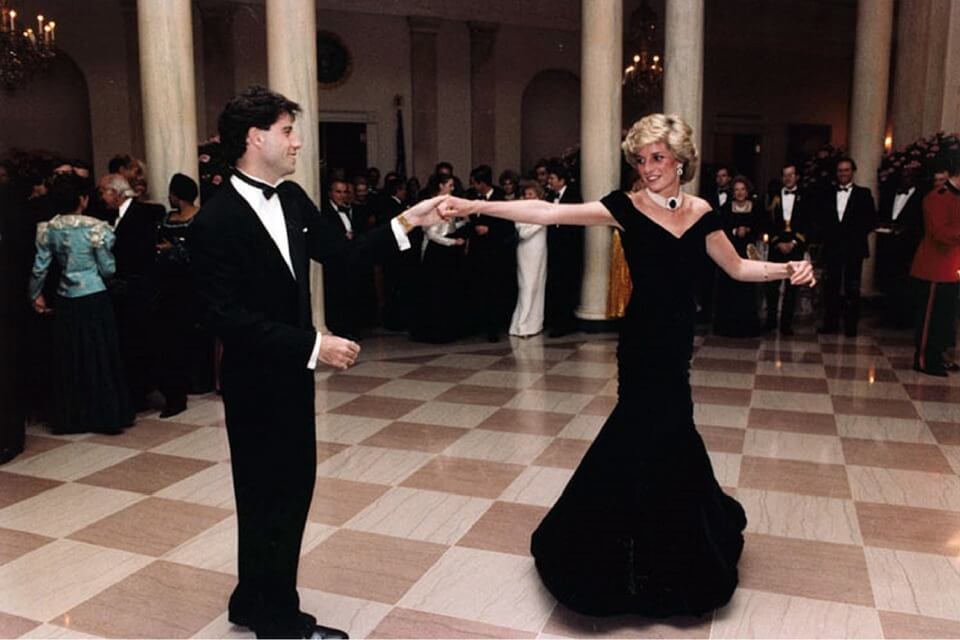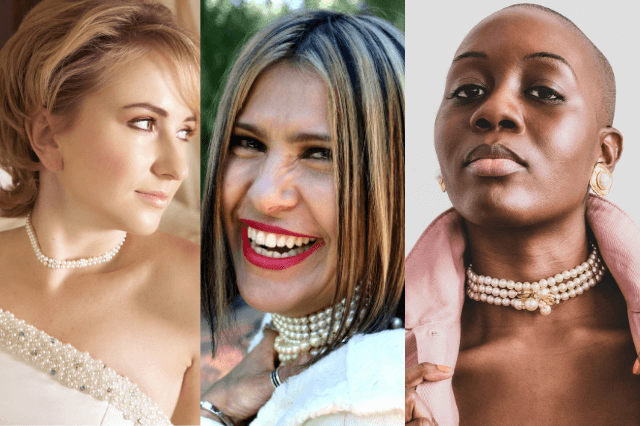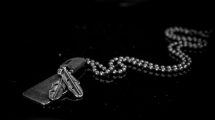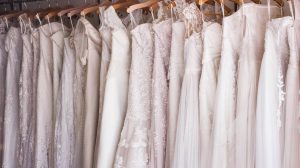As Wedding Know How editors, we write about things that we love and we think you'll like too. We have affiliate partnerships and sponsorship and may generate some revenue from these at no cost to you.
Pearl necklaces are classic, beautiful, feminine, and never out of fashion. This timeless piece of jewelry is a must-have for every stylish woman that wants to add a dash of elegance to her outfit.
There are a number of different pearl necklace styles, but in today’s article, we’ll focus on pearl choker necklaces. Back in the day, pearl chokers were usually worn exclusively with wedding dresses or evening gowns, and pearls were seen as a symbol of glamor and sophistication. However, today, pearls, especially pearl chokers, are trendy and cool, and many people like to combine them with casual outfits.
If you’re looking for a pearl choker necklace for a wedding, an event, or you just want to have this classic piece in your jewelry box, keep on reading to find out more about different pearl choker necklace styles, types, grading, size, and color.
Pearl Choker Styles and Lengths

Pearl choker necklaces are always in style. Princess Diana sports a triple-layered pearl choker in this image.
The length and style of a pearl choker necklace is a thing of personal preference. If you wish to wear your pearl choker more casually, you might want to opt for a shorter strand. Longer necklaces are usually more formal, but generally, there’s no rule, and you can wear your pearl choker with any outfit.
A choker necklace should fit snugly around the base of your neck or your throat, but it should be comfortable enough and not too tight. You should be able to move and breathe easily.

Pearl choker necklaces look amazing on anyone and for any occasion. But it’s important to choose the right style for you.
Here are some of the most popular pearl choker necklace styles:
- The 16-inch choker necklace sits right at the collar bone. It’s a simple and classic look that you’ll be able to wear every day. It can also be a part of your outfit for more formal occasions if you dress it up with fancy evening wear. This versatile piece of jewelry is a must-have in any woman’s jewelry collection.
- The double-strand pearl necklace choker is similar in length to the previous 16-inch choker necklace. The double row of pearls exudes a certain elegance and adds to the sophistication of the piece. The outside chain is always around one inch longer than the one inside, creating a magical look where both pearl strands are perfectly nested one inside the other.
- The next style is a triple-strand pearl choker, which was made famous by the former first lady Jacqueline Kennedy. She once said that pearls are always appropriate, and we couldn’t agree more! This layered choker style is exceptionally sophisticated and regal. It’s the best choice for every woman who wants to spice up single-color and minimalist design outfits.
- The pearl collar necklace can be 12 to 13 inches long, and it sits snugly around the middle of the neck. These are very luxurious and usually consist of two, three, and sometimes even more pearl strands. This Victorian-style pearl choker goes best with an elegant boat neck and off-the-shoulder outfits.
- The Pearl Princess necklace is a slightly longer necklace style than the 16-inch choker. It’s usually 17 or 18 inches long and extends through the collar bone. This style best fits those with very high necklines. It’s perfect for everyday wear and formal attire, offering a slightly more casual look than other choker styles.
Different Pearl Types

Fundamentally, pearls fall into three main categories – natural, cultured, and imitation. Depending on their origin, pearls will vary in price and rarity.
Natural Pearls
The most expensive and the rarest type of pearls, natural pearls were once the only way you could wear pearls. A tiny speck of a shell or parasite slips into a clam or a mussel, which irritates them. The creature then starts to cover it in layer upon layer of nacre, resulting in pearls that are usually irregular in shape. However, this process takes a long time, typically up to twenty years. This is why natural pearls are quite expensive and can cost up to $1,000,000 per strand. Besides, pearls don’t grow naturally all the time. This spontaneous phenomenon is very rare. For this reason, the jewelry industry turned to cultured or farmed pearls, which are produced much quicker and are extensively cheaper.
Cultured Pearls
In cultured pearls, the nacre layering process is sped up by adding an artificial sphere as a base in a mother oyster or mussel, such as a bead. The creature begins the nacre secretion which builds up the pearl over a period of about 1-2 years. The final result is a perfectly shaped pearl. The longer the bead stays inside the mollusk, the larger the pearl becomes, as more layers of nacre are deposited onto it. Apparently, more than 95% of pearls on the market today are cultured, and these fall into two main categories: salt-water pearls and fresh-water pearls.
1- Salt-water pearls
Salt-water pearls are grown in oysters in oceans around the world. These are Akoya, South Sea, and Tahitian pearls. Akoya pearls are classic and known for being perfectly round and white, lustrous, and reflective. You can, however, also find Akoya pearls that are silver, blue, or gold. In the jewelry industry, the finest Akoyas are called hanadama.
Grown in Australia, the Philippines, and Indonesia, South Sea pearls are the largest salt-water pearls and the most expensive of all farmed pearls. Thanks to their appearance and size, they’re excellent as statement jewelry.
Tahitian pearls are grown in French Polynesia. These are the only naturally dark pearls. If you find dark pearls from the other three categories, it usually means they have been artificially color-treated. These are also highly valued and make the second most expensive cultured pearls, right after the South Sea pearls.
2- Fresh-water pearls
These are mainly grown in mussels in rivers and lakes of China. Mussels are larger and more pearls can be farmed at once. This makes fresh-water pearls more common and less valuable. However, this doesn’t mean that fresh-water pearls are less beautiful and lustrous. On top of that, these are often more durable than salt-water pearls. If you have a limited budget, fresh-water pearls would be a smart choice.
Imitation Pearls
Imitation pearls are also known as faux pearls. Earlier imitation pearls were made mostly of glass. Later, the unique substance, called essence d’orient, was invented and used for coating of plastic or glass beads or shells to get a pearl-like appearance. This coating combined fish scale with varnish to simulate the look of pearls.
It’s possible to make a difference between the imitation and cultured or natural pearls, mainly because imitation pearls are too perfect.
We recommend buying your jewelry from reputable traders who grade their pearls using the A-AAA system, which is common for Akoya and fresh-water pearls and the A-D system which is used for South Sea and Tahitian.
Choosing the Right Pearl Size

Go statement or keep it simple?
The pearl size you want to go for will depend on personal taste. If you want a classic piece of jewelry that goes with almost anything, go for smaller pearls. For statement jewelry, oversized pearls would be a great choice.
However, not every size choker necklace will look the same on everyone. Chokers with larger pearls with a pendant or other added detail will look charming on a long and slender neck. A thinner choker necklace strung with smaller pearls will suit a wider and shorter neck.
Generally, the larger the pearls, the more expensive the necklace, unless it’s an imitation pearl necklace. Fresh-water pearls and Akoya pearls are similar in size, but the former is less valuable because they are grown faster and don’t have the same luster and shine. These range in size from 6 – 8.5 mm, with the most popular size being 7 – 7.5 mm.
South Sea and Tahitian pearls are larger and far more expensive than Freshwater and Akoya. Black Tahitian pearls range from 8 – 11 mm. South Sea pearls are undoubtedly the largest, ranging from around 10 to 14 mm and more.
What Pearl Color to Go For
When selecting the perfect color of your pearl choker, the best guideline would be your skin color and tone.
- Light pearls tend to go well with fair skin tones. These include rose, white, peach and cream color pearls. Pearls with silver overtones also suit this group.
- Golden and cream-colored pearls tend to go well with darker skin tones. Those with darker or olive skin will look great in chokers with darker pearls, such as black, green, chocolate, and aubergine.
- White pearls with off-white overtones work well with olive and tan skin tones.
- Black and white pearls tend to suit any skin tone, but check the overtone as warm overtones suit warm skin tones while cool overtones suit cool skin tones.
To Wrap Up
Pearls are a diverse and fun piece of jewelry that can be adapted to any style of attire. The pearl choker is unquestionably worth the investment as these can be worn for a lifetime without ever going out of fashion. When buying a pearl necklace, our recommendation would be to go to a reputable company that offers a certificate of authenticity for their pearls and a hassle-free return policy.









